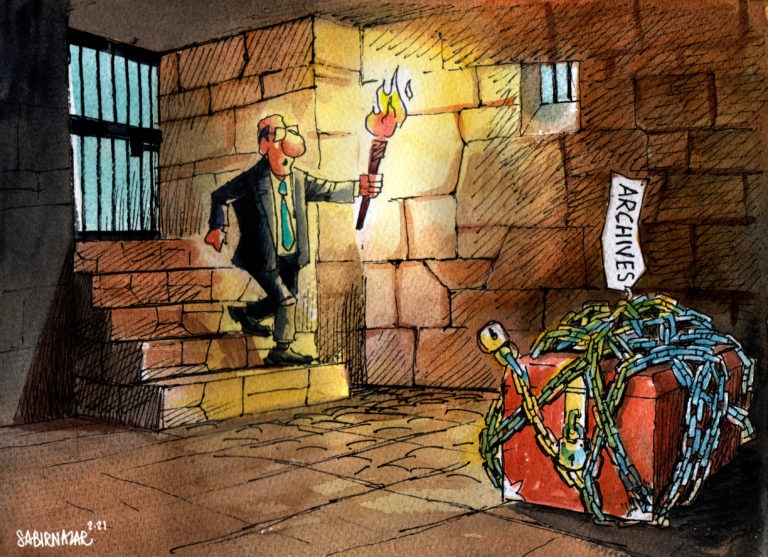I. A. Rehman
There is no culture of constitutionalism in Pakistan, and this is the biggest cause of the country’s failure to establish an enduring system of democratic governance.
A culture of constitutionalism can briefly be defined as a political creed, voluntarily followed by the custodians of state power, the parties /elements in opposition and active citizens in order to ensure that they not only act in accordance with the letter of the constitution but also continuously strive to promote its spirit.
Since the beginning the problem in Pakistan has been that it has tried to work a democratic polity while society is still largely in a pre-democracy phase. The success of the democratic experiment depended on the ability of the state’s founders and early rulers to promote the culture of democratic management by acting strictly in accordance with the country’s basic law and also enabling the citizens to move in the same direction. The latter task involved dismantling the social, economic and cultural barriers to the growth of democratic constitutionalism. The state failed on both counts. As a result, constitutionalism has not struck roots in Pakistan.
At independence, Pakistan inherited a constitution that envisaged rule by elected representatives in accordance, to a considerable extent, with the parliamentary system but subject to the will of a strong head of the state. Even this system was not followed. The dismissal of Dr Khan Sahib’s government in Khyber-Pakhtunkhwa (then NWFP), the decision of the Governor-General to choose members of the Cabinet (ministers) and to preside over its meetings, the revival of the centre’s power to dismiss provincial governments (that had expressly been deleted from the interim constitution on the eve of independence), and the separation of Karachi from Sindh without the consent of the latter’s government or its people, were contrary to respect for constitutionalism. The arguments advanced to justify these deviations from the spirit of constitutionalism – the enormous problems the weak and resourceless state faced at its birth, the country’s need for a strong executive, and the special status enjoyed by the Quaid-i-Azam – have never been found wholly convincing. It was perhaps not impossible for the founding fathers to take decisions and conduct themselves in a manner that could have laid the foundations of a culture of constitutionalism. Their inability to meet the challenge of polity-building considerably weakened the none too robust pro-constitutionalism elements in the country.
For the first five years the imperfect democracy survived because power was in the hands of politicians who owed their position to a political party, though the feudal make-up of the key politicians had asserted itself on the assassination of Prime Minister Liaquat Ali Khan, when Khawaja Nazmiuddin stepped down from the Governor-General’s pedestal to become prime-minister and Finance Minister Ghulam Mohammad was pushed up into the Governor-General’s office. Nobody knows to this day under what rule of constitution these changes were made. The party-backed politicians lost to bureaucrats when the Nazimuddin government was dismissed in April 1953. They hit back by depriving the Governor-General of his extraordinary powers – the last attempt by the old guard to save constitutionalism. They were defeated by the civil-military bureaucratic alliance in October 1954 when the constituent Assembly was dissolved.
From 1954 to 1973, constitutionalism was at a discount. Although a new constitution was enforced on March 23, 1956 and theoretically it remained in force till Oct 7, 1958, President Iskander Mirza accepted no constitutional bar to his policy of rule by whim and intrigue. It was only in 1973, more than 25 years after independence, that Pakistan had its first constitution based on the people’s democratic consensus, but its authors themselves began violating it before the ink of signatures on the document had dried. During 1977-88 constitutionalism was degraded to the level of a dictator’s fancy and the period since 1988 has witnessed a ding-dong tussle between constitutionalism and arbitrary rule.
During this period only one characteristic of a constitutional order has been accepted – namely periodic elections and transfer of power from one popularly elected government to another similarly elected authority. But Pakistan is yet to lay the foundations of constitutionalism because of lack of progress in three areas.
First, the tendency to look for extra-constitutional remedies to crises of governance has not been completely given up. Between 1988 and 2007 the party-backed politicians did not hesitate to settle scores with their rivals with the help of the military. No such attempt has been seen since 2008 but it is still possible for a political leader to threaten the government with a military putsch. Besides, the state has not succeeded in eliminating rival centres of authority/influence, which is a basic condition for a constitutional order. So long as all authorities and services are not brought under the discipline of a constitutional authority there will be little scope for the growth of a culture of constitutionalism.
Secondly, the culture of constitutionalism implies due respect for the principle of parliament’s supremacy. That this condition is not being met can easily be shown. The Pakistan code contains a large number of laws that have never been debated by the parliament. New laws continue to be made and enforced by invoking the special law-making authority of the President. Further, the government does not consider parliament’s approval, or even consultation with it, necessary before adopting or changing policies that affect the people’s fundamental rights.
An important requirement of the culture of constitutionalism is the executive’s demonstration of its respect for the houses of parliament. The Prime Minister appears in the National Assembly at his convenience. He has not appeared in the Senate so far, and this amounts to treating the upper chamber with studied contempt. Since the Senate is the highest symbol of federalism, the executive’s failure to display due respect for it is incompatible with claims of respect for the federal premises of the state – a major condition for a constitutional dispensation.
Thirdly, Pakistan’s constitutional scheme envisages the cabinet of ministers as the operational arm of the executive that is directly and collectively responsible to the parliament. The prime minister is only a leader of the team and also its spokesperson; he cannot replace the cabinet with himself and his authority to guide his ministers is subject to constitutional limits. It is impossible to claim that the cabinet system is working in Pakistan as it should.
What we can conclude from this brief discussion is that in Pakistan constitutionalism has been challenged and often routed by three extra-constitutional forces. The first of these forces is sustained by the feudal tradition. The leaders of governments and political parties arrogate to themselves the authority to decide what is good for Pakistan and its people. The second is the theory of every successful coup being its own justification. Thus, regimes that have no sanction behind them except for their ability to enforce their diktat by force have sought acceptance by the people as constitutional authorities. And the third is the vulgar assumption that once some persons have been elected as people’s representatives they become masters over them. These three strands that sustain a culture of authoritarianism will have to be completely eliminated through a well-planned social regeneration before the rise of a culture of constitutionalism becomes possible.
[Mr. I. A. Rehman is Pakistan’s most respected human rights activist and thinker]


